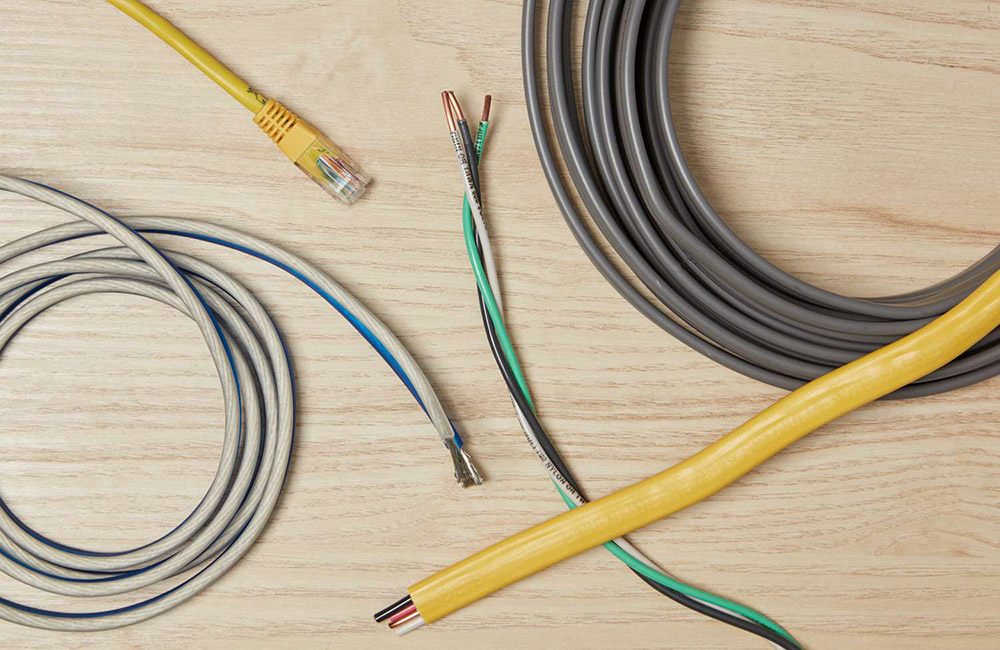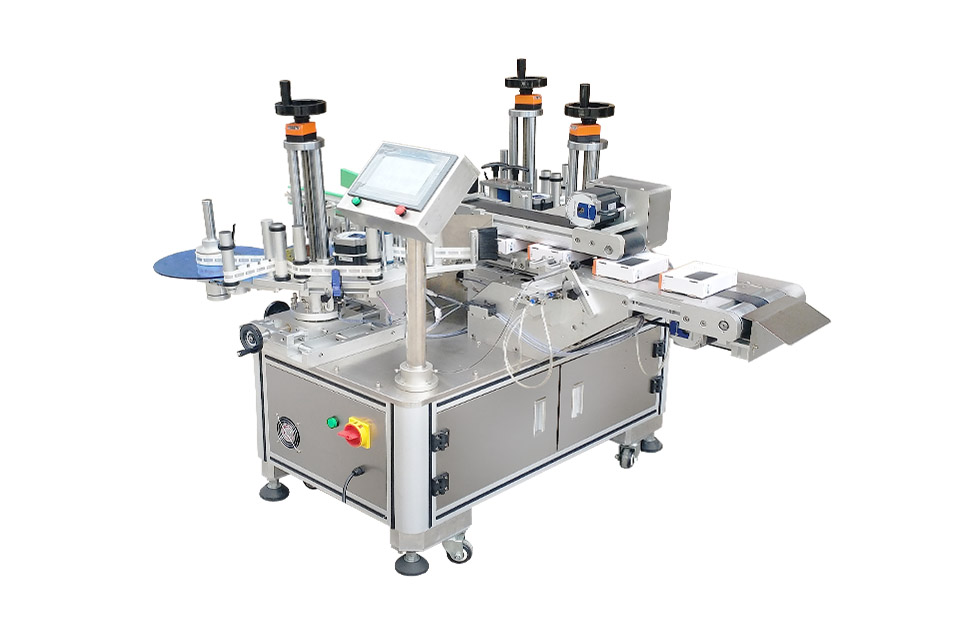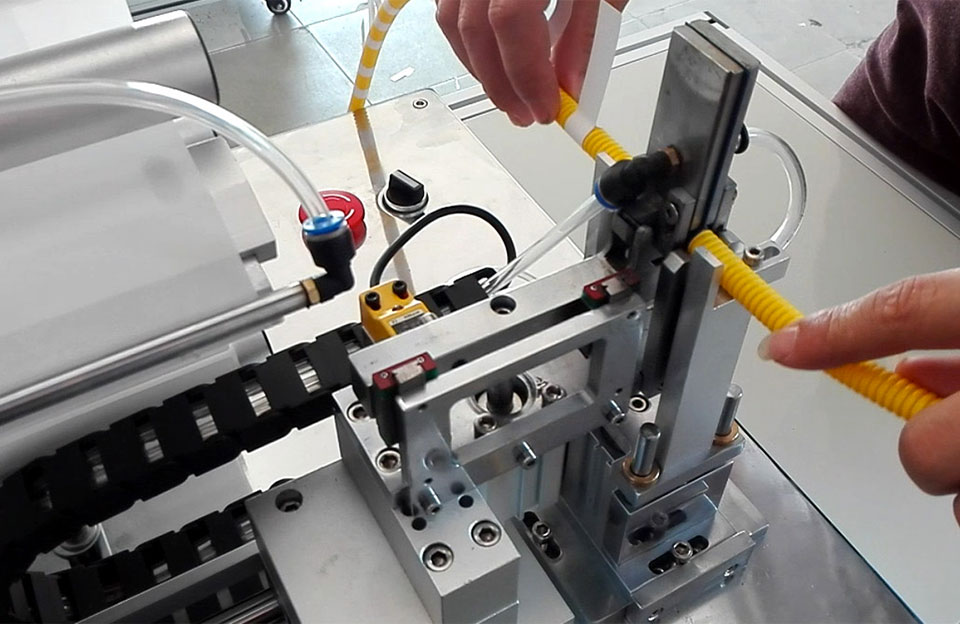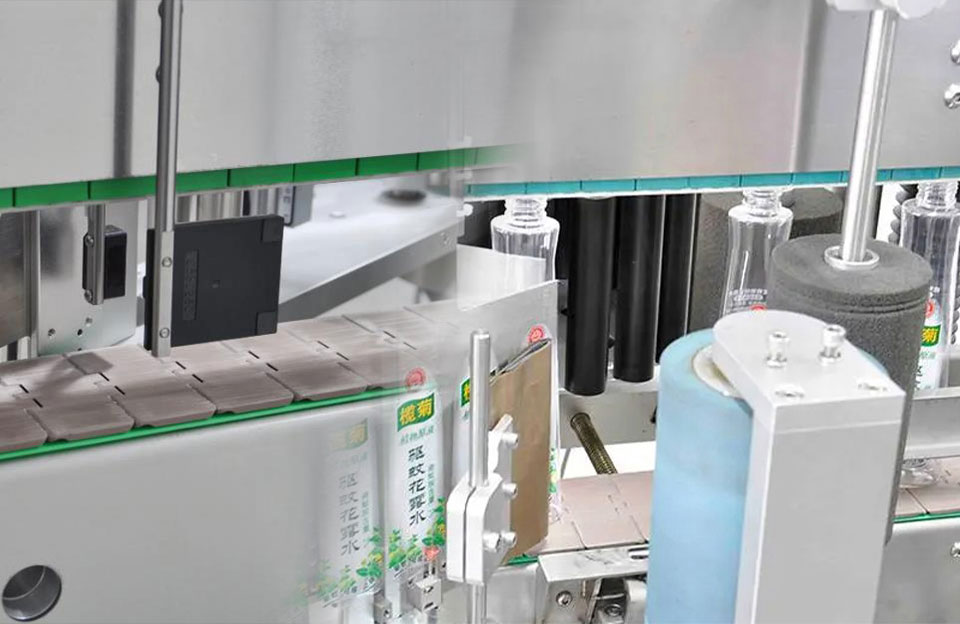A cable labeling machine is a specialized device that automatically applies labels to cables or wires. It is a valuable tool in industries where cable management and organization are crucial, such as telecommunications, data centers, manufacturing, and electrical installations. The machine streamlines the labeling process, reducing manual labor, improving efficiency, and ensuring consistent and accurate labeling.
Different Types of Cable
Cables transmit data, signals, and power between devices or systems. There are various types of cables available, each designed for specific purposes. Here are some common types of cables:
- Coaxial Cable: Coaxial cables consist of a center conductor surrounded by insulation, a braided shield, and an outer jacket. They are commonly used for cable television (CATV), internet (e.g., cable modem), and video surveillance systems.
- Twisted Pair Cable: Twisted pair cables come in two varieties, Unshielded Twisted Pair (UTP) and Shielded Twisted Pair (STP). They consist of insulated copper wires twisted together to reduce electromagnetic interference. UTP is commonly used for Ethernet networks, while STP is used in environments with higher interference.
- Fiber Optic Cable: Fiber optic cables transmit data using light pulses through optically pure glass or plastic strands. They offer high data transmission rates, long-distance capabilities, and immunity to electromagnetic interference. Fiber optics are commonly used in high-speed internet connections, telecommunications, and networking.
- HDMI Cable: HDMI (High-Definition Multimedia Interface) cables transmit high-definition audio and video signals between devices such as TVs, monitors, DVD players, and gaming consoles. They support both standard and high-definition resolutions.
- USB Cable: USB (Universal Serial Bus) cables connect peripheral devices like keyboards, mice, printers, smartphones, and external storage devices to computers and other host devices.
- Power Cables: Power cables deliver electrical power from outlets to electronic devices, appliances, and machines. They come in various types, including standard power cords for household appliances and high-power cables for industrial applications.
- Audio Cables: Audio cables transmit audio signals between speakers, headphones, microphones, and audio interfaces. Common types include 3.5mm audio, RCA, and XLR cables.
- VGA Cable: VGA (Video Graphics Array) cables connect computers and laptops to older monitors and projectors. They transmit analog video signals.
- DisplayPort Cable: DisplayPort cables connect computers and other devices to monitors and displays. They support high-resolution video and audio transmission.
- DVI Cable: DVI (Digital Visual Interface) cables transmit video signals between computers and monitors. They come in various types, including DVI-D (digital), DVI-A (analog), and DVI-I (integrated digital and analog).

Different Types of Cables
Application of Cable Labeling Machine
The cable labeling machine finds application in various industries and scenarios where accurate and efficient cable identification and management are essential. Some of the key applications of cable labeling machines include:
- Telecommunications Industry: Cable labeling machines are extensively used in the telecommunications sector to label network cables, fiber optic cables, and communication lines. Properly labeled cables aid in quick troubleshooting, maintenance, and network expansion.
- Data Centers: In data centers, cable labeling machines are crucial for managing large network cables and wiring volumes. Labels help data center technicians identify specific cables quickly, reducing downtime during maintenance and minimizing the risk of errors during equipment installations.
- Electrical Installations: In electrical installations, cable labeling machines can label wires, power cables, and electrical panels. Properly labeled electrical cables ensure safety, compliance with regulations, and ease of maintenance.
- Manufacturing and Automation: Cable labeling machines play a significant role in manufacturing and automation processes where cables connect various machinery and equipment. Labeled cables improve traceability, reduce repair downtime, and facilitate smooth operations.
- Broadcast and Audio-Visual Industry: In the broadcast and audio-visual industry, cable labeling machines are used to label audio cables, video cables, and connectors. This ensures quick setup and efficient organization during live events and studio productions.
- Automotive Industry: Cable labeling machines are employed in the automotive sector to label vehicle wires and harnesses. Clear identification of cables simplifies repairs, maintenance, and assembly processes.
- Aerospace and Defense: In the aerospace and defense industries, cable labeling machines are used to label complex cable harnesses in aircraft, spacecraft, and military equipment. Proper labeling is critical for the safety, maintenance, and rapid identification of cables during missions.
- Renewable Energy Installations: In solar and wind power installations, cable labeling machines are used to label cables and wires, making maintenance and troubleshooting more manageable for technicians.
- Healthcare: In medical facilities, cable labeling machines help manage and identify various cables used in medical equipment and devices, ensuring smooth operations and accurate connections.
- Network Cabling and IT Infrastructure: Cable labeling machines are extensively used in IT environments to label Ethernet cables, patch panels, and data connections. This simplifies network management and reduces the risk of errors during installations or upgrades.

Cable Labeling Machine
Conclusion
A cable labeling machine is a versatile and efficient solution for streamlining cable identification and management processes. It improves organization, reduces human errors, and enhances the overall professionalism of cable installations in various industries.


